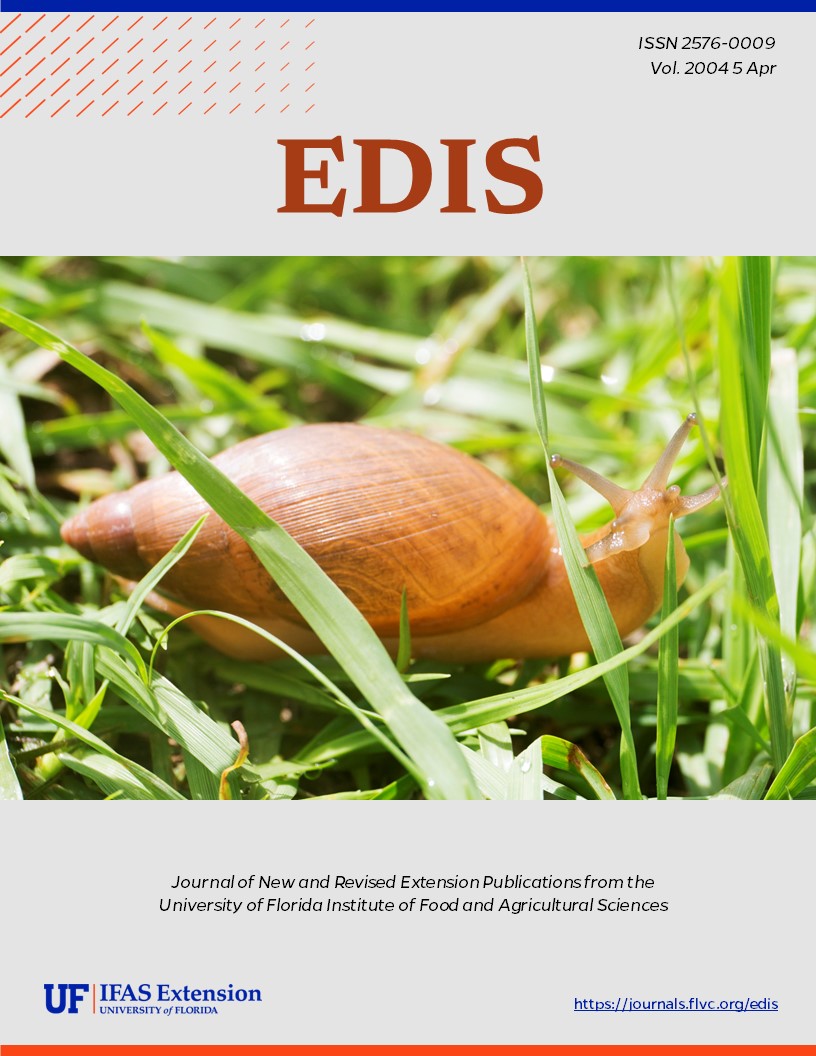Abstract
The Mexican fruit fly, Anastrepha ludens (Loew), is a very serious pest of various fruits, particularly citrus and mango, in Mexico and Central America. Its natural distribution includes the Rio Grande Valley of Texas, where populations routinely attain pest status if control measures are not practiced. It is a frequent invader in southern California and Arizona. Mexican fruit fly represents a particular threat to Florida because of its special affinity for grapefruit, of which Florida is one of the world's leading producers. This document is EENY-201 (originally published as DPI Entomology Circulars 16, 260 and 391), one of a series of Featured Creatures from the Entomology and Nematology Department, Florida Cooperative Extension Service, Institute of Food and Agricultural Sciences, University of Florida. Published: March 2001. Revised: June 2003, January 2004.
EENY201/IN358: Mexican Fruit Fly, Anastrepha ludens (Loew) (Insecta: Diptera: Tephritidae) (ufl.edu)
References
Aluja M. 1994. Bionomics and management of Anastrepha. Annual Review of Entomology 39: 155-178. https://doi.org/10.1146/annurev.en.39.010194.001103
Berg GH. 1979. Pictorial key to fruit fly larvae of the family Tephritidae. San Salvador: Organ. Internac. Regional Sanidad. Agropec. 36 p.
Carroll LE, and Wharton RA. 1989. Morphology of the immature stages of Anastrepha ludens(Diptera: Tephritidae). Annuals of the Entomological Society of America 82: 201-214. https://doi.org/10.1093/aesa/82.2.201
Clark RA, Steck GJ, Weems Jr HW. 1996. Detection, quarantine, and eradication of exotic fruit flies in Florida, pp. 29-54. In D.L. Rosen (ed.), Pest Management in the subtropics: Integrated pest management - a Florida perspective. Intercept Ltd. Andover UK.
Dickens JC, Solis E, Hart WG. 1982. Sexual development and mating behavior of the Mexican fruit fly, Anastrepha ludens (Loew). The Southwestern Entomologist 7: 9-15.
Ebeling W. 1959. Subtropical fruit pests. University of California, Division of Agricultural Science 436 p.
Hernandez-Ortiz V. 1992. El genero Anastrepha Schiner en Mexico (Diptera: Tephritidae), Taxonomia, distribucion y sus plantas huespedes. Instituto de Ecologia, Xalapa Mexico. 162 p.
Greene CT. 1929. Characters of the larvae and pupae of certain fruit flies. Journal of Agricultural Research 38: 489-504.
Ibrahim RB. 1980. Fruit flies of Florida (Diptera: Tephritidae). Gainesville: University of Florida. 355 p. Doctoral dissertation.
Jiron LF, Soto-Manitiu J, Norrbom AL. 1988. A preliminary list of the fruit flies of the genus Anastrepha (Diptera: Tephritidae) in Costa Rica. Florida Entomologist 71:130-137. https://doi.org/10.2307/3495360
Phillips VT. 1946. The biology and identification of trypetid larvae (Diptera: Trypetidae). Memoirs of the American Entomological Society 12:161.
Pruitt JH. 1953. Identification of fruit fly larvae frequently intercepted at ports of entry of the United States. Masters thesis. University of Florida, Gainesville. 69 p.
Robacher D, Magan RL. 1993. ARS Program on Anastrepha species to meet APHIS Plant Quarantine requirements. University of Florida seminar.
Stone A. 1942. The fruitflies of the genus Anastrepha. USDA Miscellaneous Publications No. 439, Washington, DC. 112 p.
White IM, Elson-Harris MM. 1994. Fruit Flies of Economic Significance: Their Identification and Bionomics. CAB International. Oxon, UK. 601 p.
Unless otherwise specified, articles published in the EDIS journal after January 1, 2024 are licensed under a Creative Commons Attribution-NonCommercial-NoDerivs 4.0 International (CC BY-NC-ND 4.0) license.

